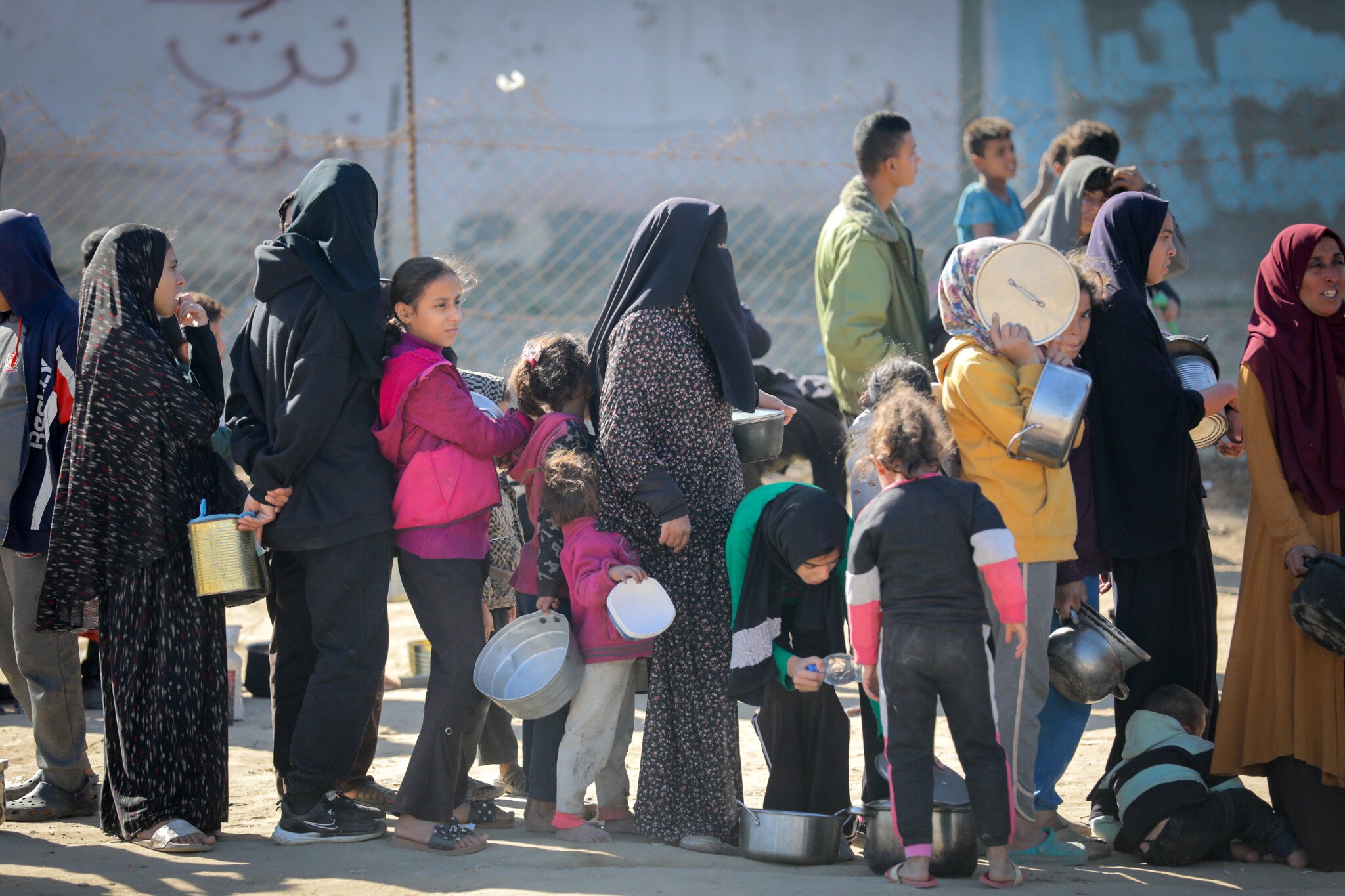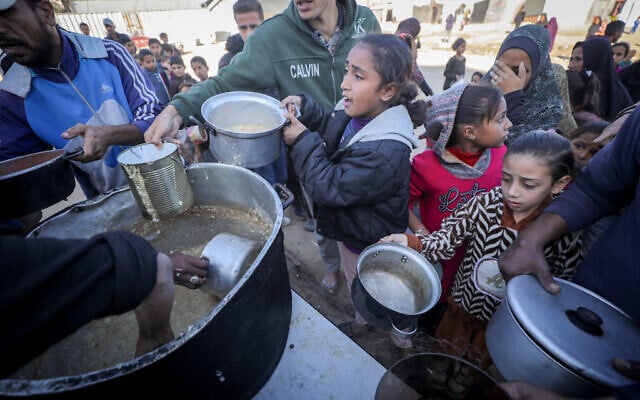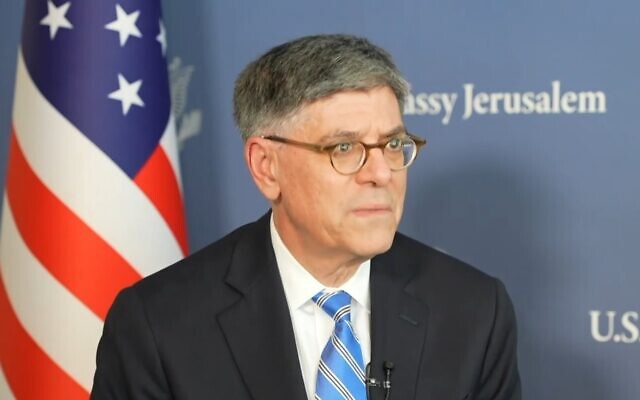



The Famine Early Warning System Network on Wednesday took down a report it published a day earlier alleging persistent famine in northern Gaza, after US Ambassador to Israel Jack Lew raised objections over the US-funded agency’s methodology.
“The FEWS NET alert, unfortunately, issued an analysis without the benefit of further examination by the Famine Review Committee, relies on outdated population estimates, and has methodological limitations based on the availability of data,” a spokesperson for the US Agency for International Development told The Times of Israel.
The spokesperson clarified that USAID remains deeply concerned about the scale of food insecurity throughout Gaza, and said more than two million people are at risk of famine, particularly in northern Gaza, where limited aid has been allowed in amid ongoing Israeli military operations targeting Hamas.
However, the spokesperson noted that a recent US assessment mission has provided updated population estimates. The US also hopes recent aid deliveries bringing food to Beit Hanoun will soon be replicated throughout northern Gaza.
Those developments should lead to a more accurate FEWS NET assessment, the spokesperson indicated.
FEWS NET is an independent food insecurity monitor, but is financially backed by USAID, which reviewed the report before it went out on Tuesday and urged that corrections be made to account for the outdated figures, the spokesperson explained.
FEWS NET decided to go ahead and publish it as is, leading USAID to again reach out and request that corrections be made. Following that intervention, the agency agreed to take down the report until further notice, the spokesperson said.
The main issue highlighted by Lew in his Tuesday criticism of the FEWS NET report was that it relied on allegedly outdated figures from the United Nations Office for the Coordination of Humanitarian Affairs on the number of civilians still located in northern Gaza.
In his statement, the ambassador noted, “It is now apparent that the civilian population in that part of Gaza is in the range of 7,000-15,000, not 65,000-75,000, which is the basis of this report.”
The Israeli military estimates only some 5,000-9,000 civilians are present in the area, while the UN Palestinian refugee agency UNRWA estimates there to be 10,000-15,000.
“At a time when inaccurate information is causing confusion and accusations, it is irresponsible to issue a report like this. We work day and night with the UN and our Israeli partners to meet humanitarian needs — which are great — and relying on inaccurate data is irresponsible,” Lew added.
Israel has been at war against the Hamas terror group in Gaza since the Hamas-led onslaught of October 7, 2023, in which terrorists killed 1,200 people in Israel, mostly civilians. Terrorists also abducted 251 people who were taken as hostages to the enclave.
Experts, aid groups and UN agencies have for months sounded warnings of imminent famine in northern Gaza, which Israel has almost completely sealed off since launching a major military operation there in early October against Hamas operatives attempting to regroup.
Israel has rejected such claims, asserting they rely on inaccurate and biased data.
On Monday, the United Nations aid chief, Tom Fletcher, said Israeli forces had hampered efforts to deliver much-needed aid in northern Gaza.
“North Gaza has been under a near-total siege for more than two months, raising the specter of famine,” he said. “South Gaza is extremely overcrowded, creating horrific living conditions and even greater humanitarian needs as winter sets in.”
Israel blames the lack of humanitarian aid on United Nations agencies, accusing them of not delivering hundreds of truckloads of aid that have been allowed in.
The UN says it is often too dangerous to retrieve and deliver the aid. It blames Israel as the occupying power for a breakdown of law and order — which has enabled armed groups to steal aid convoys — while also accusing it of heavily restricting movement within the territory.
Israel also says members of Hamas have stolen much of the aid sent in for civilians.


